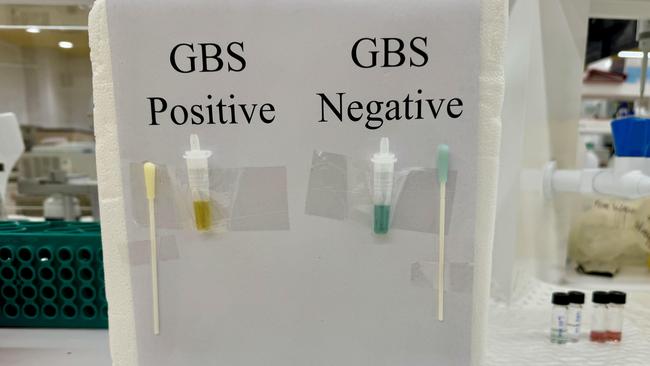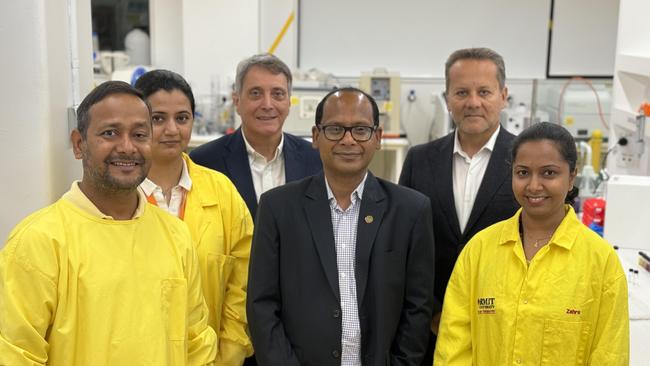New RAT-style test could diagnose stillbirth cause
A RAT-style test could be a “game changer” towards diagnosing mothers with a condition that means their babies may be born stillborn.
News
Don't miss out on the headlines from News. Followed categories will be added to My News.
A RAT-style test to diagnose a leading stillbirth cause in just 15 minutes will be trialled by a major Melbourne hospital as early as next year, in a bid to save hundreds of babies.
If successful, the test would be a “game changer” for babies who are at risk of stillbirth, disability, preterm birth or illness if their mothers have a Group B Streptococcus infection during late pregnancy or birth.

The trial hopes to drastically boost test to treatment time, with traditional tests — offered to most expectant mums and costing more than $90m each year — taking five to seven days, delaying care.
The RAT-style tests — thanks to a $3m federal government grant — will be rolled out at Northern Health as early as mid 2025 after an RMIT and NEXSEN Biotech team developed a colour-changing bacteria-sensing technology.
Federal science and industry minister Ed Husic said the Australian technology gave doctors a “fighting chance against one of the leading causes of death and disability for newborns” and could cut “tens of millions” in pathology costs.
“If we can save families the heartbreak of losing a child to stillbirth, this will mean the world to them and our community,” he said.

Group B Strep (GBS) infection is responsible for 150,000 stillbirths and infant deaths worldwide every year and can cause life-threatening complications in newborns such as sepsis and pneumonia.
RMIT research leader Professor Vipul Bansal said the bacteria was found in a third of adults and infection was asymptomatic for most people.
“If it gets transferred to a baby because the immune system is quite weak, it can have damaging consequences,” he said.
He said treatment was “quite simple” antibiotics, but it was not safe to give to every mother on a ‘just in case’ basis.
“If we have a test that is similar to a Covid test … the GP or maternal care nurse can test it on the spot and administer an antibiotic,” he said.
Northern Health research program head Associate ProfessorPrahlad Ho said the traditional test was neither as accurate or fast as they want and a rapid test they believe has “close to 100 per cent sensitivity and specificity” would allow more accurate and rapid diagnosis.
“Both of those are critical to prevent sick babies and stillborn babies,” he said.
He said if shown to work, “this technique would be a game changer” andspare a lot of babies from illness.
“That’s really, really important because it’s going to help a lot of families going forward and reduce the stress on the health system,” he said.
Prof Bansal said the test — which turns green or yellow depending on the results — was more accurate and sensitive than Covid RATs.
Women in the trial will be offered both the new test and traditional test so the results can be compared.
Once the trial has enough data to demonstrate the test’s accuracy, women may be offered early treatment based on the RAT-style test results.




